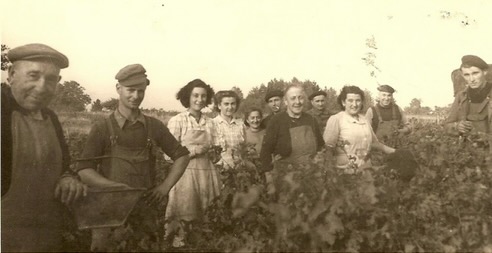
The chattering classes of the the food and wine world find plenty to argue about, but it’s safe to say that there is today near-universal agreement on one point: We all want to know where the things we eat and drink come from, how they were made, and by whom.
It’s our appetite for such information that has launched ten thousand blogs, magazines, cookbooks, memoirs, profiles, and travel guides. Need-to-know fever has had a remarkable impact on restaurant service, too. Woe to the waiter who knoweth not the breed of pig whence came the pork chop or who cannot trippingly recite its genealogy, yea even unto the tenth generation.
We’ve all been the victim of the too-informed young server and its easy to poke fun at the randier manifestations of this phenomenon, but the truth is that our hunger for ever more detailed information about each thing we ingest defines contemporary culinary culture. Compared with the see-no-evil approach that characterized the 20th century, it doesn’t seem like such a bad thing.
Why this should be so isn’t immediately apparent, but I’d draw attention to two phenomena: the large-scale migration to urban centers that has been so important a part of the postwar story in the U.S. and Europe and the large-scale shift from agricultural to industrial and office-based work during the same period. Each has had the effect of drawing almost all of us farther from the sources of our nourishment than was the historic norm. Railroads and refrigeration were the twin engines of this new attenuation. It’s been convenient, in some respects, but it hasn’t always been comfortable.
Uncomfortable in part because knowing that wheat is ripening in a field somewhere is not quite the same as watching the grain growing golden in our own or neighbor’s field. Nor is buying our food from a grocer, no matter how familiar, the same as buying it directly from a farmer – although this distinction was apparently lost on a woman I overheard years ago complaining loud and long over the price of fresh-picked corn at a roadside farm stand. “We don’t need you farmers, you know,” she sniffed. ”We can always go to the supermarket.”
It’s likely that the warm glow of connectedness many of us feel when among pasture and farmland doesn’t stem from a childhood spent in the country. It doesn’t need to. The source of such feelings is a spring that runs deeper even than personal experience, reaching far back into a common human history when food gathering, and later agriculture, was more or less everyone’s full time job.
Whatever might be the benefits of large-scale, highly capitalized, technology-dependent food production, the remoteness it enforces seems to have left us bereft of something deeply important. Sometime around the turn of the 20th century just as modernism was getting up a head of steam, observers diagnosed this previously unnamed sense of anxiety and loss as deracination – literally, the condition of being pulled out of the ground; torn from one’s roots. See a snapshot of the word’s history of use — and sudden steep rise to importance — on Google’s Ngram Viewer here.
Here in the wine corner, I’m frequently struck and occasionally moved by the disinclination of a guest to make a wine purchase and be on her way until a satisfying dose of detail in the form of biography, family-history, backstory, etc. has been administered. Jokes about the medicinal properties of wine notwithstanding, it’s clear from where I sit that for lots of people time spent leisurely browsing the shelves, perusing labels, savoring a sip at the tasting table, or drawing out a chat with someone on the staff all appear to have modestly therapeutic effects. Maybe it’s time we coined the term reracination for the experience of being reconnected to our roots – or at least enjoying a brief sense of it.
We’re said to live in the Information Age, so perhaps it make sense that we reflexively turn to information as a cure for whatever ails us. That we yearn to know the biographical details of the chicken on our plate or the Sangiovese in our glass suggests that this kind of information is somehow balm for the old wound. The eagerness with which we seek it out may be the best measure of how badly we crave it.